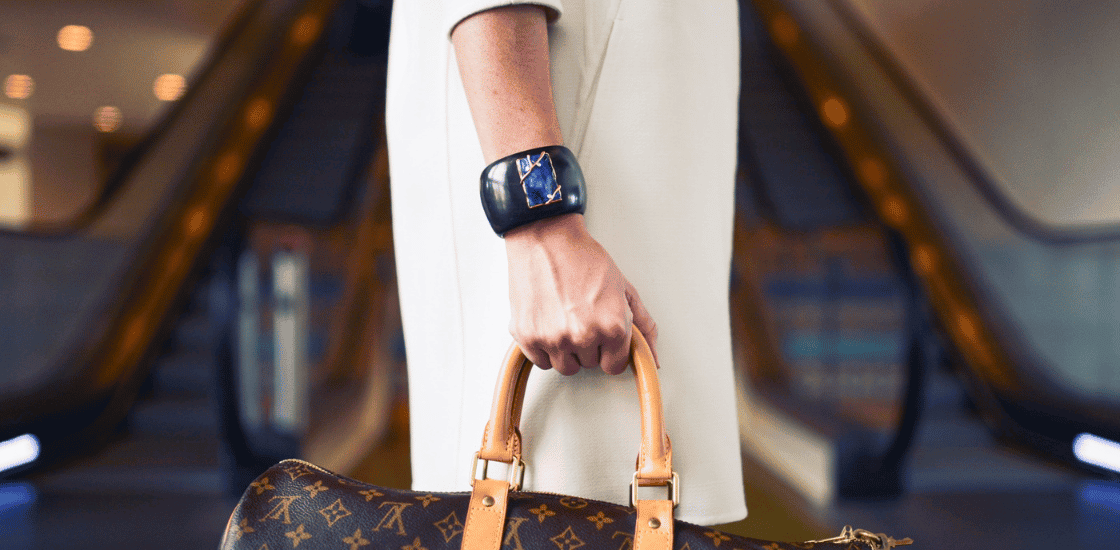Retail
What are the big luxury trends around the world right now?
Published on 7 July 2025
Modified on 30 June 2025

Across the world the luxury retail sector is facing fundamental challenges, whether it’s tariff wars, price fatigue or navigating the ongoing slowdown. Of course, good strategy and preparedness are important. But in our multipolar world, keeping an eye on the bigger picture has become more important than ever
As price resistance comes into effect and customers diversify into experiences, luxury brands will look to volume (rather than just price increases) to boost their bottom line, a strategy which often includes embracing new markets... or reinventing old ones.
The China Syndrome
As Cegid’s Luxury Retail Trends Report highlights, sluggish consumer spending in China, along with a government crackdown on influencers promoting luxury items online has taken its toll. Those luxury brands hoping for a revival of the country’s pre-pandemic ‘label lust’ (according to McKinsey, the country delivered half the global growth in luxury spending between 2012-2018) were probably disappointed. Kering’s revenue in Asia-Pacific (excluding Japan) fell by 24% for the fiscal year 2024, while LVMH fell by 11% across the same period.
There are some positive signs, however. In December 2024 Chanel debuted its Métiers d’Art collection with a lavish show in Hangzhou, signalling major luxury players are working hard to rekindle interest from this lucrative market, which is forecast to add 80m new middle-class-and-affluent consumers by 2030, according to Boston Consulting Group. Chanel is the most-purchased luxury brand in China, recently reporting that purchase rates had increased 4% during the latest quarter. Prada, Hermès and Celine have all witnessed similar increases.
Brave New Worlds
A recent Bain & Company report estimated Latin America, India, Southeast Asia and Africa are collectively expected to add more than 50 million upper-middle class luxury consumers by 2030. Luxury brands are also looking at Saudi Arabia, where the luxury goods market is projected to reach $2.84bn in revenue and grow 2.42% from 2024-2029.
Symbolic of the growth of the middle classes in these emerging markets is the popularity of luxury shopping streets such as Ho Chi Minh City’s Dong Khoi, New Delhi’s Khan Market and Istanbul’s İstiklal Street which all made Cushman & Wakefield’s list of world’s most expensive shopping streets alongside the Via Monte Napoleone in Milan and the Champs-Élysées in Paris.
Snapshot: Japan
Japan remains a strong growth opportunity for luxury brands. According to Statista, the luxury goods market in Japan is expected to reach $31bn by 2029, with luxury fashion forecast to generate $9.7bn in 2025 alone. In part, this is being driven by a weaker Japanese yen, with overseas luxury shoppers travelling to Tokyo and Osaka to find luxury goods at cheaper prices than they would find back home.
The local audience for luxury goods is also strong and embedded in the country’s cultural codes, such as the Japanese deep-seated respect in Japan for quality and craftsmanship.
Luxury remains an instore experience in Japan, and retail formats are original and well-considered. New entrants to the country need to be mindful consumers expect a truly authentic brand experience.
Snapshot: India
Between 2023 and 2028 India’s ultra high net worth population will grow over 50% with luxury customers reaching 100m by 2027 according to McKinsey and The Business of Fashion. Expect to see more luxury malls and department stores, such as Galeries Lafayette. In particular, India’s wedding sector has sizeable opportunities.
In a country with such a large population and geographic span, understanding the consumer is critical. There are also internal Indian trends to be aware of, as well as the differentiation between western wear and Indo-Western styling.
An American Story
Although McKinsey predicts the global luxury market will grow between 1% and 3% annually from 2024 to 2027, US figures are rosier, with growth expected between 4% and 6%. The issue of course, for European brands, is the risk of tariffs and changes to the De Minimus rule which will be high on every luxury CEO’s agenda in the coming year. The industry bellwether has invested significantly in the country and has recently hinted at producing product in the US too. It’s a pragmatic approach other companies might be considering.
For luxury brands of all sizes, re-engineering the cost stack will be important if tariffs are enacted. Solutions range from absorbing additional cost into margins and pushing for higher volume sales to price increases which have already hit a ceiling for many luxury consumers.
Planning for the Future
While opportunities for non-Chinese growth are many, it’s more important than ever luxury brands put the work in before expanding into a new market.
“Luxury brands need to understand and analyse the risks in order to focus on the most important compliance topics in their regions,” advises Samuel Guillaume, Cegid’s localisation manager. “With careful planning, luxury brands can give themselves a smoother ride by ensuring compliance with local regulations and best practices.”
Conclusion
There is an additional bonus on brands to run software using the most current data, as many regions regularly update their sales tax tables. Adding to the challenges is the need to fit fiscal compliance into the customer experience. Without a robust solution in place, the purchase process and data-sharing requirements can become burdensome for shoppers, leading to lost sales, poor customer satisfaction and a drop in brand loyalty.
However, as Guillaume explains, “Leveraging the right technology as soon as possible will enable a luxury retail brand to expand into profitable new markets and grow its customer base. Luxury brands need to understand and analyse the risks in order to focus on the most important compliance topics in their regions.”
Read more in Cegid’s Luxury Retail Trends Report!
Download

